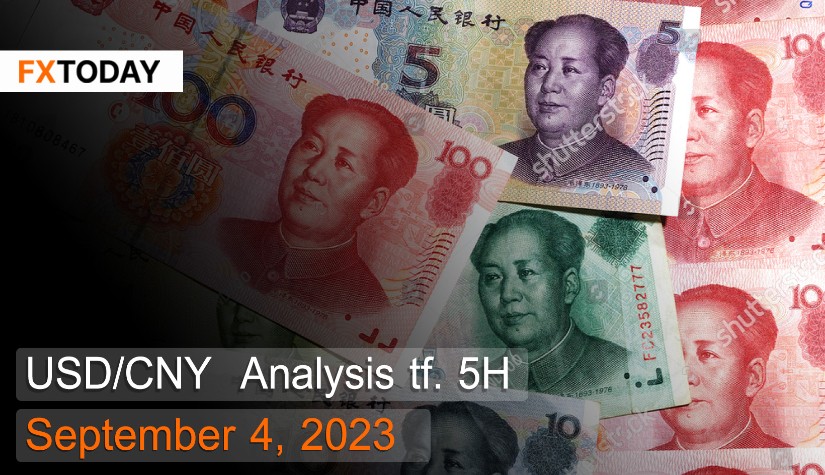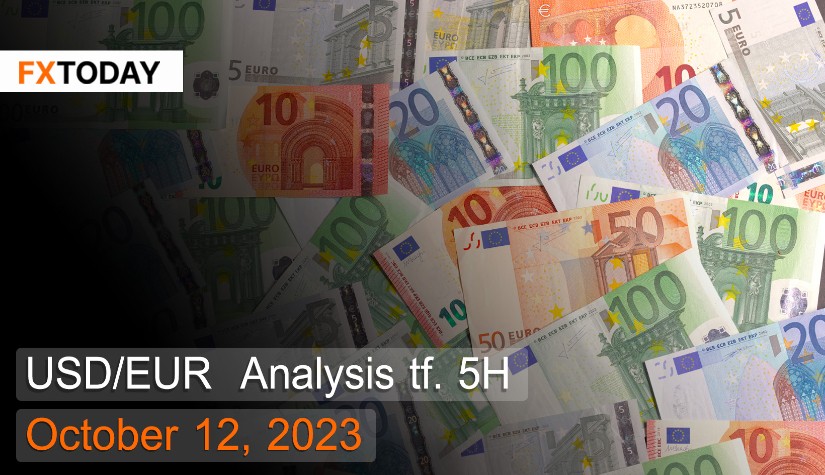China's economy has started to show significantly positive signs.
The Chinese yuan is weakening once again after a slight strengthening following the announcement by the People's Bank of China (PBoC) that it would reduce foreign exchange reserve requirements for banks. Chinese commercial banks have lowered the reserve ratio for foreign exchange to as low as 4%, a decrease of 200 basis points, starting from September 15th.
The PBoC's decision to reduce the reserve ratio for foreign exchange (RRR) is aimed at making the exchange of the 16.4 trillion-dollar foreign exchange reserves more efficient. China's foreign currency deposits stood at $821.8 billion at the end of July, with the goal of halting the depreciation of the yuan and aiding the recovery of the economy following an internal economic slowdown.
Additionally, private sector activity has shown significant expansion in August, contributing to the strengthening of the yuan. However, the future trajectory of the yuan remains uncertain amid economic volatility in China and multiple interest rate cuts by the central bank.
In August, China's Manufacturing Purchasing Managers' Index (PMI) increased to 51.0 from 49.2 the previous month, surpassing market expectations of 49.3. This represents the strongest and fastest growth since February. Both production and new orders increased once again, accompanied by a corresponding increase in hiring, marking the first employment growth in six months. While the volume of purchasing of goods also increased, it remained at a modest level. However, foreign sales still appear weak. Despite rising raw material costs, companies continued to lower selling prices amid intense competition, resulting in a decrease in confidence to its lowest level in 11 months, although the overall signal remains positive.
The PMI for the Services sector will be announced tomorrow, and it is expected that service sector expansion may slightly slow down in August. Additionally, trade data due on Thursday is expected to show a further contraction in both exports and imports in August compared to the previous year. This is seen as a concerning signal for the Chinese yuan and may raise investor concerns further.
Techical analysis data (5H)
Resistance: 7.2733, 7.2822, 7.2902
Support: 7.2565, 7.2486, 7.2396
Source: Investing.com
| Name | S3 | S2 | S1 | Pivot Points | R1 | R2 | R3 |
| Classic | 7.2396 | 7.2486 | 7.2565 | 7.2654 | 7.2733 | 7.2822 | 7.2902 |
| Fibonacci | 7.2486 | 7.2550 | 7.2590 | 7.2654 | 7.2718 | 7.2758 | 7.2822 |
| Camarilla | 7.2598 | 7.2613 | 7.2629 | 7.2654 | 7.2659 | 7.2675 | 7.2690 |
| Woodie's | 7.2390 | 7.2483 | 7.2559 | 7.2651 | 7.2727 | 7.2819 | 7.2896 |
| DeMark's | - | - | 7.2609 | 7.2676 | 7.2778 | - | - |
Buy/Long 1: If there is a touch of the support level in the price range of 7.2486 - 7.2565 but it fails to break the support at 7.2565, you may consider setting a TP around 7.2822 and a SL at approximately 7.2396 or according to your acceptable risk level.
Buy/Long 2: If you manage to break the resistance in the price range of 7.2733 - 7.2822, you could set a TP around 7.2902 and a SL at approximately 7.2486 or as per your risk tolerance.
Sell/Short 1: If there is a touch of the resistance level in the price range of 7.2733 - 7.2822 but it fails to break the resistance at 7.2733, you might consider setting a TP around 7.2486 and a SL at approximately 7.2902 or based on your acceptable risk level.
Sell/Short 2: If you manage to break the support in the price range of 7.2486 - 7.2565, you could set a TP around 7.2396 and a SL at approximately 7.2822 or as per your risk tolerance.
| Name | Value | Action |
| RSI(14) | 48.580 | Neutral |
| STOCH(9,6) | 37.824 | Sell |
| STOCHRSI(14) | 56.149 | Buy |
| MACD(12,26) | -0.003 | Sell |
| ADX(14) | 17.959 | Neutral |
| Williams %R | -44.343 | Buy |
| CCI(14) | -35.9575 | Neutral |
| ATR(14) | 0.0104 | High Volatility |
| Highs/Lows(14) | 0.0000 | Neutral |
| Ultimate Oscillator | 51.650 | Buy |
| ROC | -0.117 | Sell |
| Bull/Bear Power(13) | -0.0089 | Sell |
|
Buy:3 Sell:4 Neutral:4 Summary:Sell |
||
















